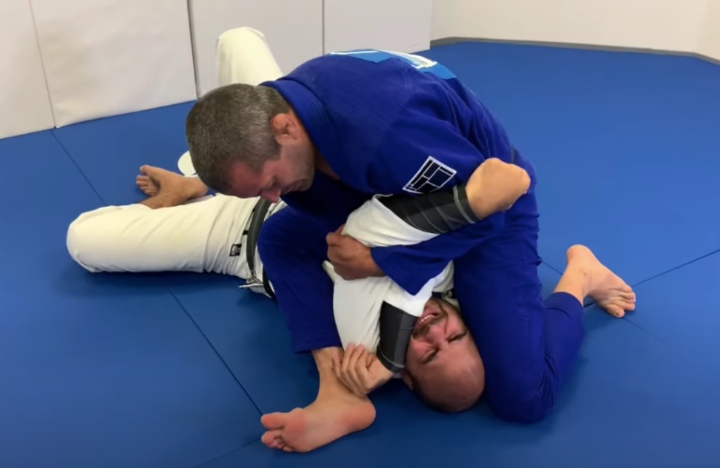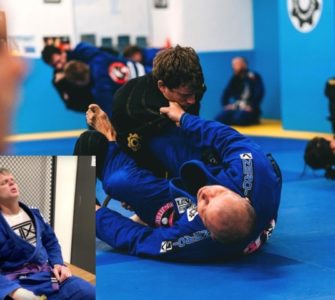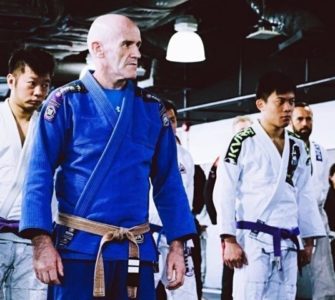Guest post by Evolve MMA, Asia’s premier championship brand for martial arts. It has the most number of World Champions on the planet. Named as the #1 ranked martial arts organization in Asia by CNN, Yahoo! Sports, FOX Sports, Evolve MMA is the top rated BJJ gym in Singapore.
Brazilian Jiu-Jitsu is a martial art that has evolved significantly over the past decades. The beauty of BJJ is that every practitioner is encouraged to roll (spar) with their training partners every training session. This greatly benefits your development because you get to apply your knowledge against fully resisting training partners.
Every BJJ white belt will be exposed to a myriad of techniques in their first few years of training. This means people will gravitate towards specific techniques based on their body type, age, and personal preferences.
Regardless of grappling style, learning an armlock or two is always a smart thing to do. The armlock is a staple technique in BJJ and has been battle-tested for many years. This article will discuss the top armlocks you can include in your game.
What Is An Armlock?
The armlock is a submission that aims to hyperextend the arm into compromising positions. There are two basic types of armlocks – the straight armlock and the bent armlock. The straight armlock is where you submit the opponent’s arm by straightening it and pushing it opposite the elbow joint.
The bent armlock is defined by first bending the arm to an “L” configuration, then forcing the hand towards the back. Common examples of bent armlocks are the kimura and americana.
Benefits Of Using Armlocks
The armlock is an excellent technique because it can be used in many ways. You’ll see variations of the armlock in many self-defense demonstrations. This is especially the case for disarming knives and firearms. It is perhaps one of the most common techniques taught in police academies worldwide, as restraining the arm usually leads to de-escalation.
In the context of competitive Jiu-Jitsu, the armlock is a versatile weapon that can be applied from almost all positions. The kimura, a variation of the bent armlock, is the best bang-for-buck submission you can learn. You can get the kimura from both top and bottom positions. Once you get the kimura grip, you can use it to submit, sweep or take the opponent’s back. It doesn’t matter if you play gi or no-gi Jiu-Jitsu; the armlock will serve you well up until the black belt level.
That said, here are our top recommendations for armlocks to study.
1) Americana
The americana is an awesome technique usually taught early in your BJJ journey. It is a variation of the bent armlock that puts pressure on the shoulder by hyperextending the arm in a paintbrush-style motion. This technique is commonly used once you secure a top pin-like mount or side control. The americana is also known as the V lock, key lock, and paintbrush armlock.
In this video, BJJ World Champion Teco Shinzato from the EVOLVE Fight Team demonstrates the americana from the full mount. If the opponent assumes a defensive posture by placing their arms near their torso, grab the top arm as you use a stiff arm to force it to the mat. Note that using your bodyweight should be enough to separate the arm from the body.
Next, use a cross grip to grab the wrist and place your elbow near their neck. Loop your other hand underneath their arm and grab your other wrist. To finish, slowly drag the hand as you lift the elbow.
2) Kimura
As mentioned, the kimura can be applied from many positions, but it is best taught from the closed guard. In this video, BJJ black belt Tom Davey teaches a cool setup to the technique.
The kimura from closed guard usually starts by forcing the opponent to post their hands on the mat. More often than not, your opponent knows this as well, so it is essential to know many tactics to break posture.
Coach Tom shares that using a grapevine can be an effective way to break the opponent’s posture. Lace your foot to your opponent’s and bring your knee towards you as you extend. Doing this unbalances the opponent and will force them to post on the mat.
From here, grab the wrist using a thumbless grip and secure the kimura position. Finish the submission by placing your arm towards your chest as you move their hand to the back of their head.
Understand that this technique is an alternative to the basic kimura technique. We have covered the basic kimura in our previous entries, so please check them out if you need a refresher.
3) Basic Armbar
The basic armbar is a straight armlock that can be applied in many positions. Don’t be fooled by its name; it is a very technical submission and will serve you well for years to come.
In this video, Teco Shinzato from the EVOLVE Fight Team shows the steps to the armbar from the guard. Start by getting your grips and force the opponent’s arm and elbow to the center of your body. Pull their shoulder down and pivot your body to the side. A good indicator that your pivot is enough is when your nose is directly in line with their ear. From here, place your pivot leg to their neck, align their thumb to the ceiling and extend.
4) Reverse Armbar
The reverse armbar, also known as the arm crush, is a straightforward technique typically applied from the guard. What’s nice about this submission is that it is very simple to perform. It is also relatively safe because you can easily reset with little compromise to your position.
In this video, BJJ black belt Jeff Glover shares his approach to the submission. He mentions that you can apply the technique easily once your opponent posts their arms as a counter to the double underhooks from the butterfly guard.
Shoot your double underhooks and move your weight backward. Doing this will force your opponent to base using their arms. Wrap your arm outside theirs as you squeeze near the elbow for the submission.
5) Omoplata
The omoplata may seem like a complex technique but is actually surprisingly easy to do. The benefit of the omoplata is that you can use it as both a submission and a sweep.
In this video, BJJ Champions Fabio Da Mata and Valdir Rodrigues from the EVOLVE Fight Team demonstrate the omoplata from guard. Start by securing your grips by grabbing the sleeves. Open your guard and place your feet on their hips. Bring one knee near their chest.
Next is to flare the inside knee as you shift your position. Bring your outside foot towards their arm and turn by pushing against their hip as you lock your feet and break their posture. Finally, sit up as you grab their belt while pulling the trap arm towards your body for the tap.
Conclusion
These submissions are guaranteed to elevate your game to new heights. Remember to drill these techniques on both sides to maximize their full potential. Keep training, and see you in our next article!
Learn 50 Ways To Master The Armbar With Submission Machine Renato Canuto.
Always Be Fighting To The Finish, And Learn How To Armbar From Any Position.
IBJJF & Kasai World Champion Renato Canuto Can Set The Armbar Up From Any Position – You’ll Learn Ways To Find It.
That You Never Knew Were Right In Front Of You.


















